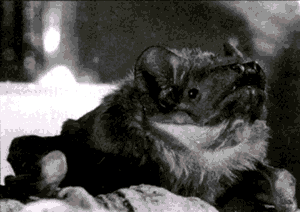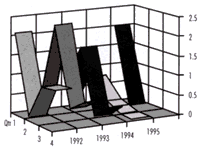Special interest groups
Bat Group
The best news this spring has been the discovery of a new breeding colony of greater horseshoe bats in South East Cornwall. This contained 36 bats in early July. We now have four breeding colonies in Cornwall, although three are quite small. Greater horseshoe bats are among the rarest in Britain, with a total population of only four to five thousand.
Two more barbastelles have been picked up dead, one at Constantine and one near Looe. There are currently no known breeding roosts of this bat in Britain and it is thought to breed in tree holes. These two records confirm a widespread but small population in Cornwall.
The group held a very successful Bat Detector Weekend at Boscastle on 21st- 23rd June, organised by Jeremy Williams. The weekend included two all-night sessions and identified seven species foraging in the Valency Valley - greater and lesser horseshoes, long- eared. Natterer's. Daubenton's and whiskered bats and pipistrelles.
Daniel Eva

The Boss says: "Don't forget the Trust's bat and seal adoption schemes the perfect Christmas present." Photo: Stuart Hutchings
Dolphin Group
It is now over four years since the bottlenose dolphins arrived and it seems they are deserting West Cornwall in the third quarter of each year. Last year they went to Torbay. "Benty". the juvenile with a bent dorsal fin, continues to be spotted regularly since first being seen in October 1991 as a newborn. This year a group of six is still being seen in mid-July and has spent more time along the north coast than usual.

Bottlenose Dolphins per hour of watching Land's End peninsular.
Over 6,000 hours of watching have been logged but there are still important questions to answer. What are the long-term trends, especially in porpoise sightings? Will the bottlenoses move on or are they just extending their home range? How do bottlenoses behave in groups of different sizes? Is there a pattern to the rarer species? And so on.
Next Dolphin Group meeting - Friday 11th October 1996, 7.3Opm, at Five Acres. All casual reports of dolphin sightings are welcome - please phone me on (01736)711783.
Nick Tregenza
Scientific Committee
Cetacean by-catch in fisheries
The present view, based on the Trust's work and a range of other sources is that, around the UK and including areas off the shelf edge, the main by-catches of oceanic dolphins are in mid-water or pelagic trawls and in the tuna drift net fishery, while the main by-catches of porpoises are in nets set on the bottom. Baleen whales and turtles get caught almost exclusively by drift nets.
The complexity of fishery issues becomes clearer when you consider that beam trawling, which probably does least direct damage to cetaceans, probably does most direct damage to sea-bed ecology, with consequences for the survival of post-larval fish etc.
Nick Tregenza
Veryan Wildlife Watch
Veryan Wildlife Watch Group spent half term watching activity in a blue tit nest box on live TV via a camera placed in the box earlier in the year. An adult bird regularly roosted in the box from mid-February onwards, and the first piece of moss appeared on 21st February. Over the next nine weeks the pile of nesting material in the box slowly mounted up. Eight eggs were laid from 28th April to 6th May when the female started to Sit. During this time she was occasionally fed in the box by the male, but she still made frequent sorties for short periods.
On 17th May, seven of the eight eggs hatched and we could count the frequency of feeding visits by the parents. The last day that both adults were seen together at the nest was 23rd May, and it is possible the mate met with an accident about this time. The chicks appeared to grow satisfactorily, but by 31st May two chicks had died; they remained in the box, but away from the nest cup. By 2nd June we were left with two chicks and on 7th June the final, lone survivor was successfully fledged and left the nest. It was disappointing not to have had a happier result, but we think the cold spring this year had reduced the supply of caterpillars on which the nestlings are usually fed - indeed we seldom saw caterpillars fed to the chicks.
Our current activity is the rescue of painted lady and peacock butterfly caterpillars from a field where in past years nettles and thistles have been cut down when the caterpillars are feeding. The painted ladies pupated first between 2nd and 4th July. Just think - the parents of this generation came to us from the continent in early June. We hope to have a "batty" event during the summer holidays.
Marian James
Life's no tea party! | Contents | Special interest groups


